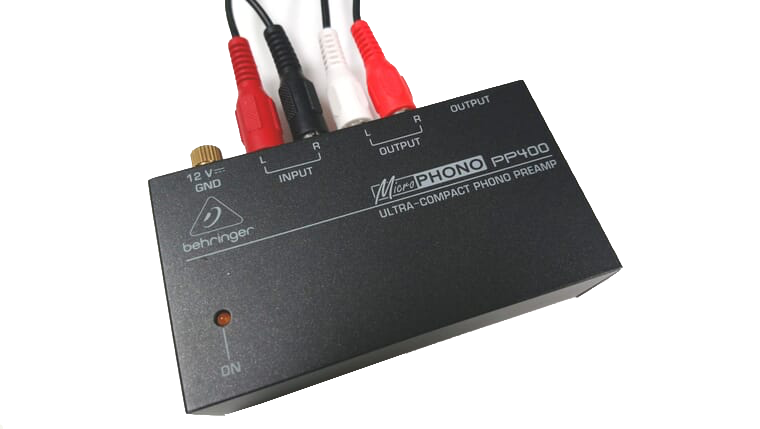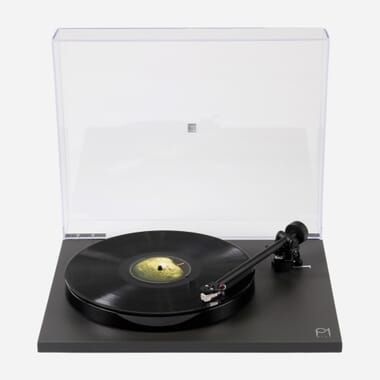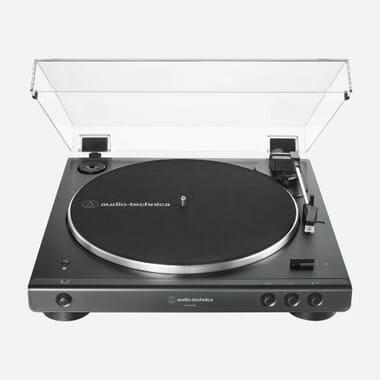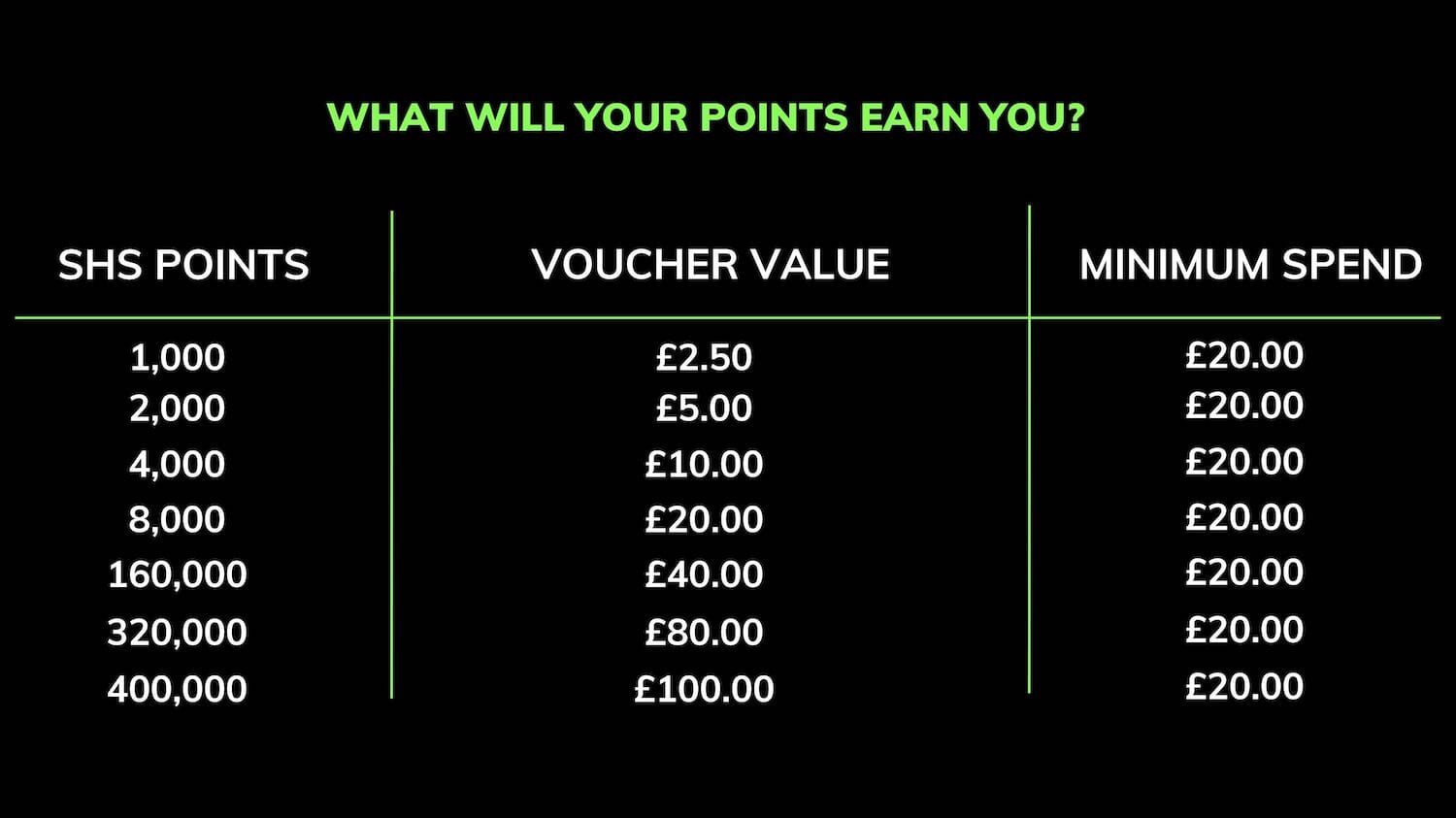The Beginner's Guide to Turntables
Although the notion of buying a record player and enjoying vinyl appears attractive at first glance, when it comes to researching your first turntable, there is often more to choosing the right model than first meets the eye.
So if you're a complete newbie to vinyl, and you're baffled by all the terminology which gets thrown about, then there's no need to fear! Put the kettle on, reach for the biscuits and sit back as we take you through everything you will need to consider when finding the right turntable for you.
First thing's first: here is a simple glossary to help you identify and understand all the components that make up a turntable...
what Parts make up a turntable?
If you have previously been used to downloading or streaming music, you will probably be used to interacting with a touch screen to select your music. But when it comes to turntables and vinyl, there's a lot more involved than you may think.
And while there are hundreds and of different makes, models and specs of turntables, most are united by having a set of familiar components. Below, you will see a diagram of all the usual parts of a turntable, their names and their primary functions.
Turntable Glossary
The reference turntable used in this diagram is the award-winning Audio Technica AT-LP120XUSB. Designed to give users superb audio quality, combined with a wealth of features to enhance your vinyl experience, this is the ideal model for us to show you the common and less common features of a turntable.
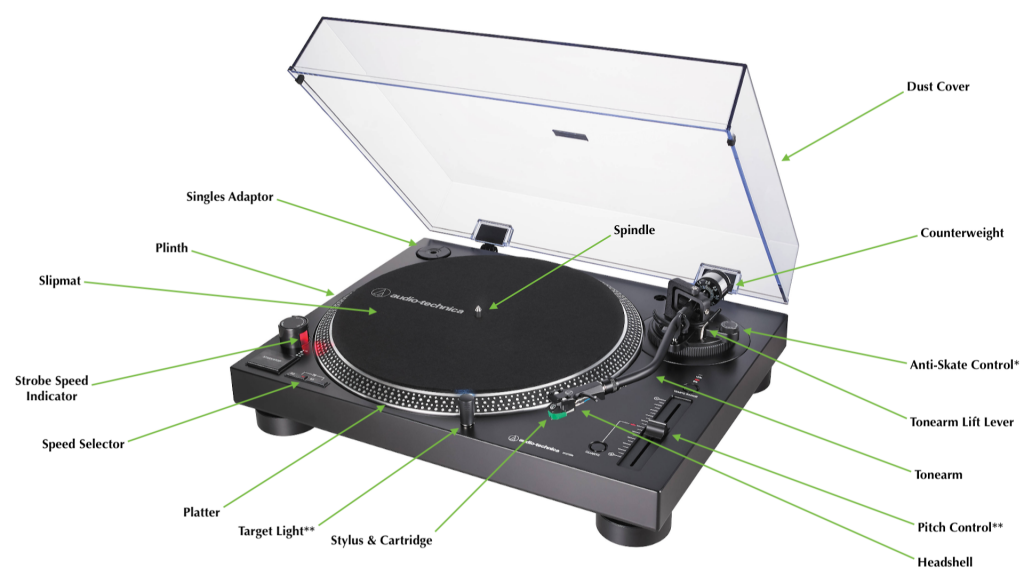
VIEW Audio Technica AT-LP120XUSB
Spindle - This centralises your record on the platter for playback. Some turntables also come complete with a space adapter for 7" singles sporting larger centre apertures.
Singles Adaptor- Allows 7" records with larger centre apertures to locate over the centre spindle.
Plinth - The base on which all the components which make up your turntable are seated. The AT-LP120X used here has a reinforced plastic plinth, whereas some other turntables may have MDF or acrylic plinths instead.
Slipmat - A round mat which sits on the platter, giving a soft surface for the record to sit on. The slipmat also provides the record with traction to stop it slipping during playback.
Strobe Speed Indicator- A red light shines on the raised dots of the platter to indicate if the turntable is maintaining speed. Depending on the speed selected, the dots will appear stationary as the platter spins. If the speed is off, the dots will appear to travel in the opposite direction to the platter.*
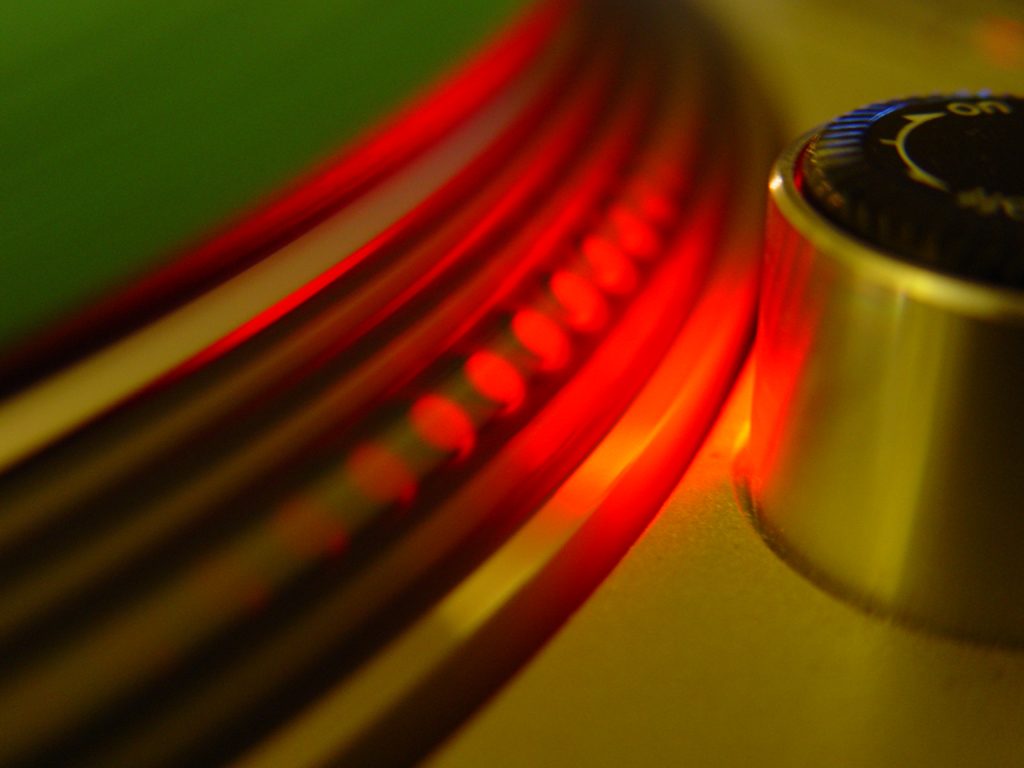
Speed Selector- These controls select typical playback speeds of 33 1/3 or 45 RPM, whereas some turntables may provide an option for 78 RPM too. Many turntables feature controls to alter speeds, whereas some turntables require their drive belt to be manually lifted from one pulley to another for changing playback speeds.
Platter - The circular rotating platform on which your vinyl record sits during playback. Some are made from acrylic or metal. And in the case of the Rega Planar 2, its platter is made from glass for better resonance dampening.
Target Light- A useful light beam source for locating your record's tracks in darker surroundings*.
Stylus - Also referred to known as the needle, which is responsible for making contact with the grooves of your record and extracting audio information. The series of microscopic bumps and ridges on a vinyl record's surface causes the tip of the stylus to vibrate during playback.
A stylus clips into the cartridge, and is easily interchangeable for renewing once worn or if an upgrade is available for better sound reproduction. Many styli feature an elliptical-shaped tip, which offers higher levels of accuracy due to the way they sit neatly in the grooves of your record.
Subsequent movement of the cartridge's internal magnet produces electrical signals, which are then amplified to create an audio signal. Most turntables employ a moving magnet type of cartridge. In contrast, more premium models may use a moving coil cartridge for higher levels of accuracy.
Headshell - Designed to hold the stylus and cartridge in place, many turntables have easily interchangeable headshells for users to upgrade to more premium options if required.
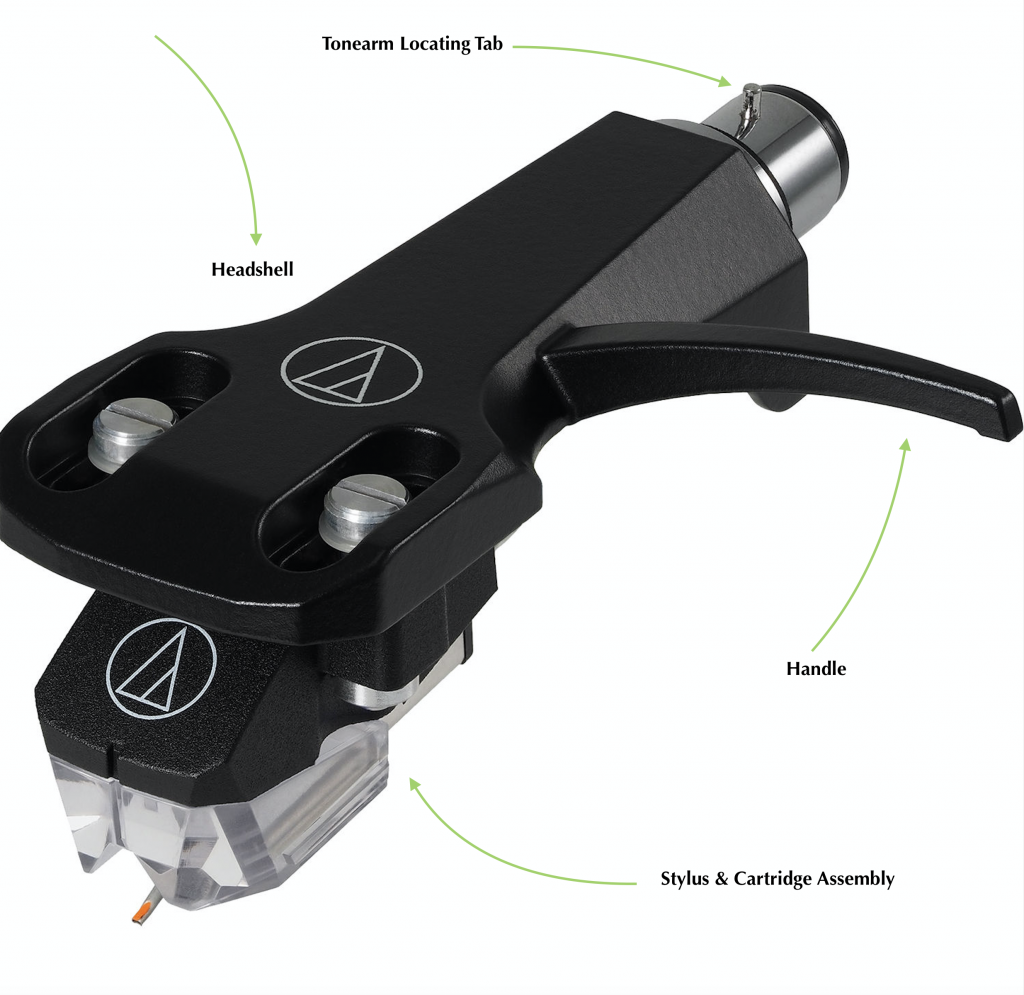
Pitch Control - Normally reserved for professional turntables, this control allows users to adjust the playback speed when tempo-matching and mixing records.*
Tonearm - The tonearm is responsible for supporting the cartridge and stylus assembly (see below), as well as relaying audio signals to audio connections at the back of the turntable itself.
Tonearm Lift Lever - This simple lever does precisely as its name suggests: it allows you to lift the tonearm up or down onto the record. This convenient mechanism is ideal if you aren't confident about manually handling the tonearm by the headshell's handle.
Anti-Skate Control - The anti-skate control applies a gentle outward force to the tonearm to counteract its natural response to glide prematurely towards the centre of the record.
Achieving the correct anti-skating force helps the stylus to track your record's grooves correctly, as well as minimising wear to your vinyl too. This setting matches the value on the balance weight, as specified by the manufacturer's specs for your particular cartridge. Some turntables, such as the Rega Planar 1, already come preset from the factory and therefore don't require calibration.
Counterweight - A weight attaches to the back of the tonearm so that you can balance it correctly. Obtaining the correct balance optimises the tracking force and reduces wear to your stylus and records.
More Features to Consider
Now that you know the names and the functions of all the turntable components above, you will have a clearer understanding when it comes to choosing your first turntable.
However, here are a few other components and elements of a turntable, you should be aware of when researching the right one for you and your record collection.
Types of Cartridge
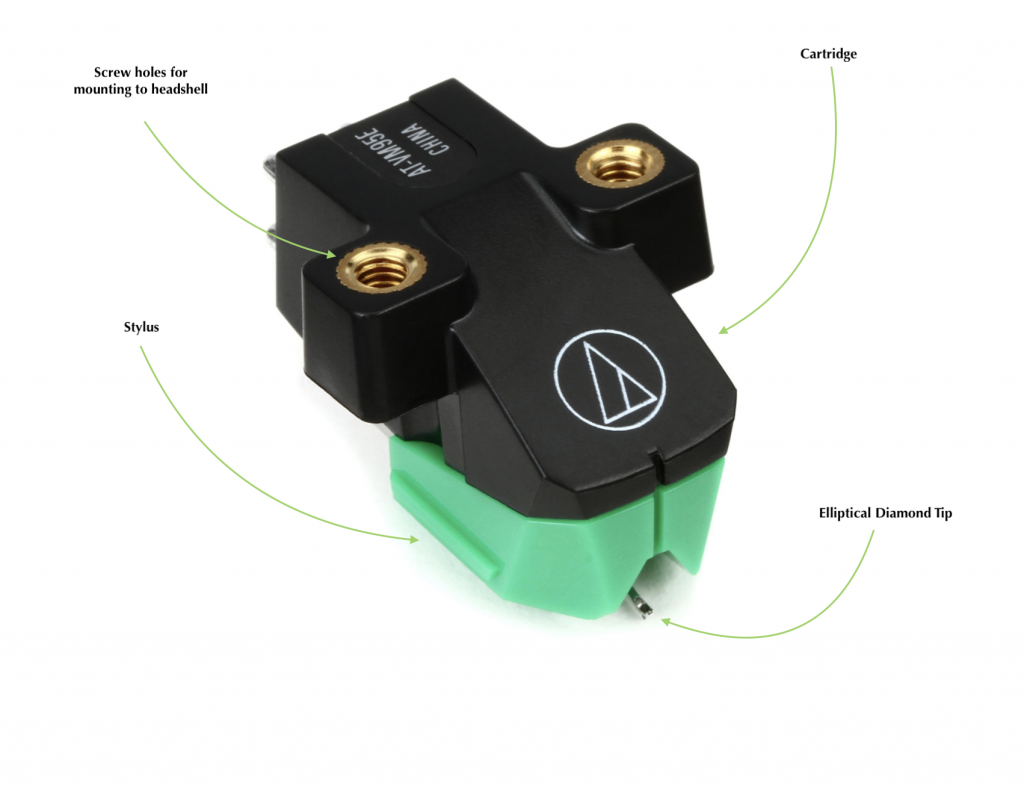
Moving Magnet (MM): This is the most commonplace design for cartridges, in which a magnet generates an electrical impulse from the magnetic field generated by a magnet vibrated by the stylus.
Moving Coil (MC): A thin coil of wire attached to the rear of the stylus vibrates to create a magnetic field between two fixed magnets housed in the base of the cartridge. Moving Coil designs are usually reserved for high-end turntables in which a more precise cartridge is required.
Belt Drive Vs. Direct Drive
The drive system of a turntable turns the platter during playback. There are two common types of drive system, as explained below:
Direct Drive - The platter is spun directly from the motor, and not via any form of drive-belt. Direct drive turntables are generally favoured by DJs and professional users, as the motor's torque is sent straight to the platter, which means quicker platter spinning from stationary.
Belt Drive - This is the most common form of drive type for quality domestic turntables, such as the Rega Planar 1, Planar 1 Plus and Planar 2 turntables. A rubber belt relays power from the motor assembly to the platter. Belt-driven turntables often deliver better sound quality because their rubber drive band absorbs vibrations from the motor instead of the platter on a direct drive turntable.
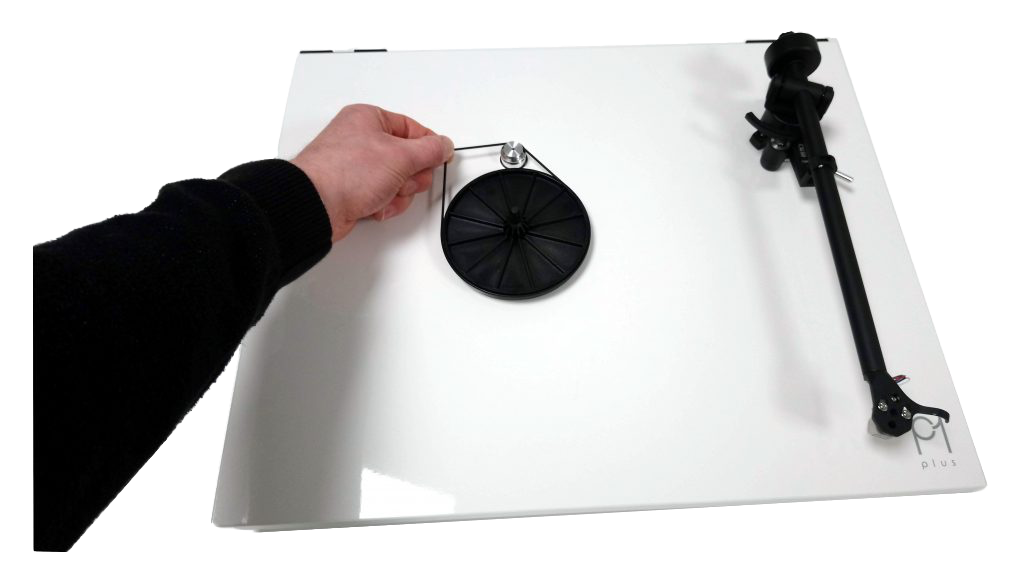
VIEW REGA PLANAR 1 PLUS
Types of Output
In the early days of vinyl records, you would connect your turntable to a dedicated HiFi system. But with so many listening devices available to choose from nowadays, it's best to understand how your turntable will connect to your chosen amplifier, speaker or media device.
And, with the advances in wireless, multi-room audio systems, vinyl can playback in any room instead of being limited to a single dedicated HiFi system. Here are some of the popular connections that are available to use on some makes and models currently being produced.
Analogue Out (RCA) - This is the most common type of audio output, with a plus dedicated to the left and right audio channels. The audio connection allows you to hook up your turntable to an amplifier or an active speaker. RCA outputs are also handy for integrating your turntable with a multi-room audio system, available from the likes of Sonos or Bluesound.
USB Output - Many newer turntables with built-in preamps often feature an integrated USB output so that you can digitise your vinyl collection on a computer.
Bluetooth Turntable - As its name suggests, a Bluetooth turntable transmits its audio wirelessly to a receiving Bluetooth speaker, such as the Marshall Stanmore II. One of the most common Bluetooth turntables currently on the market is the Audio Technica AT-LP60XBT, which offers fully automatic playback too.
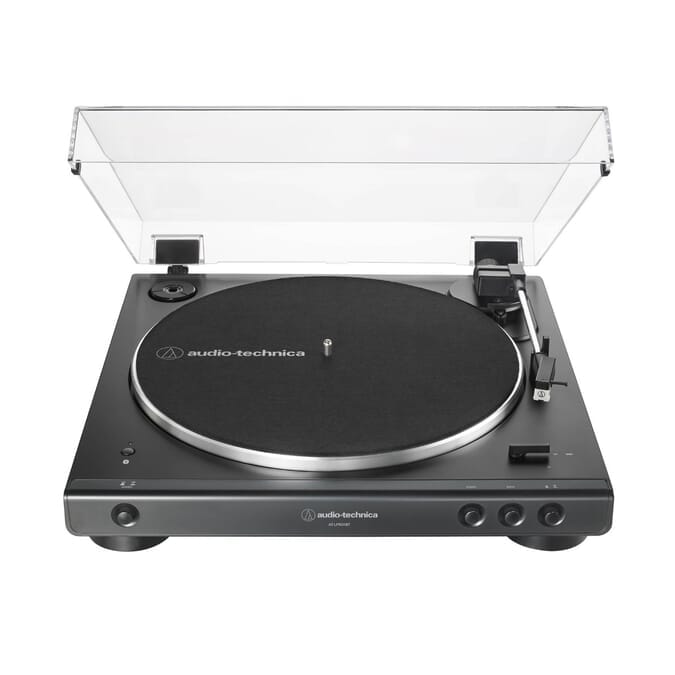
VIEW AUDIO TECHNICA AT-LP60XBT
Internal Phono Preamp Vs. External Phono Preamp
Most turntables require connection to a turntable preamp - just like the Behringer PP400 below - before wiring to your stereo amplifier.
The low line-level signals generated by a cartridge needs amplifying to normal levels so that your stereo amplifier can process the audio correctly. Without a preamp, the audio from your turntable will sound too quiet, shy of bass and lacking in detail.
However, many current turntables come complete with an integrated and switchable preamp circuit so that you don't need to utilise an external preamp device. On some more advanced preamps, you can switch between Moving Magnet or Moving Coil cartridges, which adjusts output levels accordingly.
Sometimes a grounding wire is present to connect to the earthing point on your stereo amplifier to eradicate electrical noise in the audio signal.
To Summarise
Hopefully this guide has given you an idea of what parts form a turntable, as well as their function. However, when it comes to choosing the right model for you and your vinyl collection, it's often best to consider how you want to use the turntable.
For example, do you want to use the turntable with an amplifier in a traditional HiFi set up? Or, are you looking to integrate your turntable with your wireless multi-room audio system? Not to mention, are you swaying more towards convenience features to help enjoy your vinyl, or for a turntable which delivers outright top audio quality?
If you would like any advice or help choosing the right turntable for you, get in touch via phone, email or online chat and a member of our team would be more than happy to help!

By Tom Parker, Sales Team Member at Smart Home Sounds




